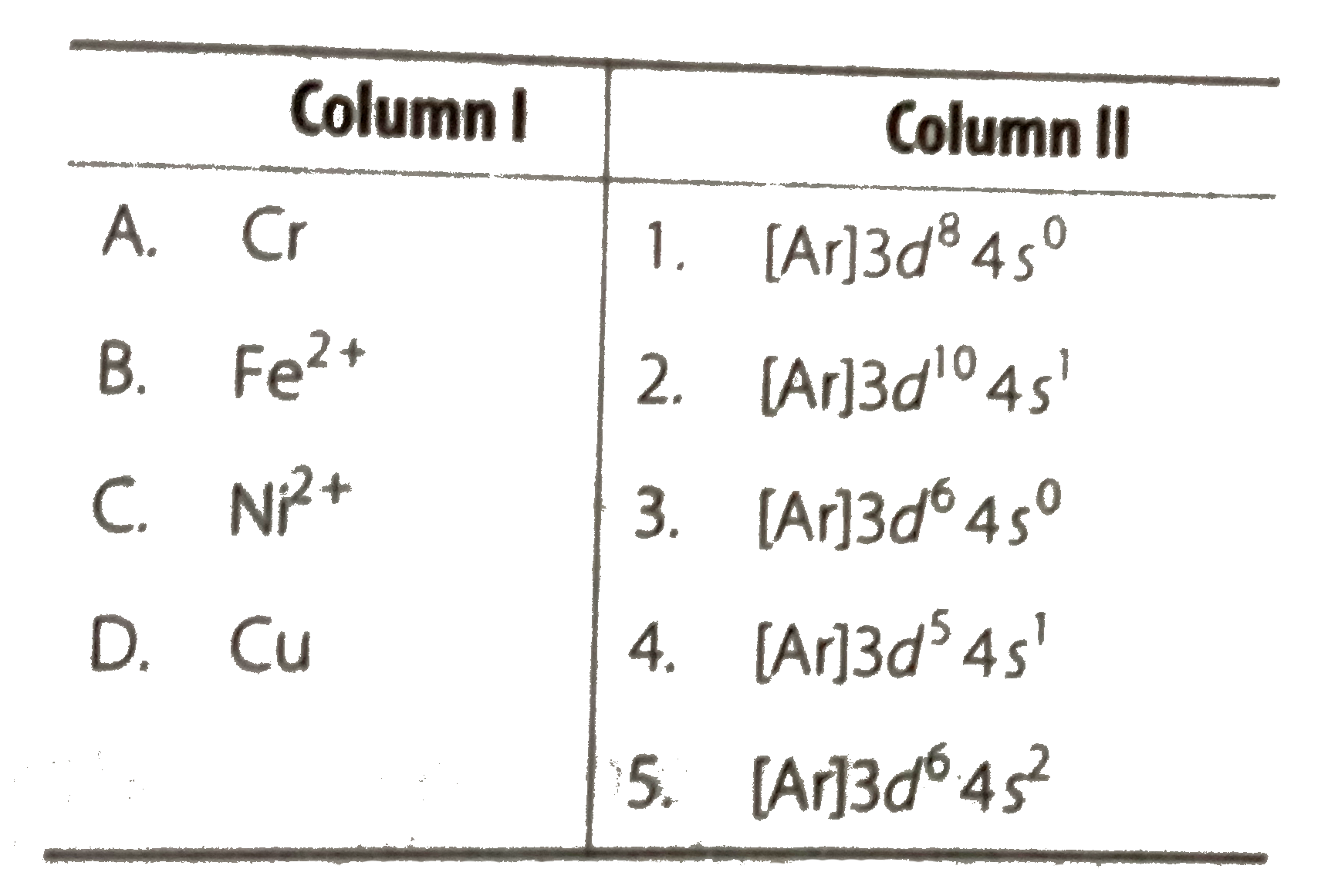Which of the following electronic configuration will have maximum I.P. difference between II and III I.P. :
The correct Answer is:B
To determine which electronic configuration will have the maximum ionization potential (I.P.) difference between the second (I2) and third (I3) ionization potentials, we need to analyze the given electronic configurations and the stability of the resulting ions after the removal of electrons.
1. Understanding Ionization Energy:
- Ionization energy is the energy required to remove an electron from an atom or ion. The first ionization energy (I1) is the energy required to remove the first electron, the second ionization energy (I2) is for removing the second electron from a +1 charged ion, and the third ionization energy (I3) is for removing the third electron from a +2 charged ion.
2. Analyzing Electronic Configurations:
- We need to analyze the stability of the electronic configurations after the removal of electrons. The stability of an electron configuration is influenced by factors such as filled or half-filled orbitals.
3. Configuration A:
- Example: 1s² 2s² 2p⁶ (Neon configuration)
- I1: Removing the first electron from a stable noble gas configuration is relatively easy.
- I2: Removing the second electron from a +1 ion (which is now less stable) will require more energy.
- I3: Removing the third electron from a +2 ion (which is even less stable) will require even more energy.
- The difference I2 - I3 will be significant due to the stability of the filled p-orbital.
4. Configuration B:
- Example: 1s² 2s² 2p⁶ 3s²
- I1: Removing the first electron from the outer s-orbital (3s) is relatively easy.
- I2: Removing the second electron from the 3s orbital will require more energy.
- I3: Removing the third electron from a filled p-orbital (after the removal of two electrons) will require a lot of energy.
- The difference I2 - I3 will be significant, but not as high as in configuration A.
5. Configuration C:
- Similar analysis as above, but the filled p-orbital will still contribute to a significant I2 - I3 difference.
6. Configuration D:
- Similar analysis as above, but again the filled p-orbital will contribute to a significant I2 - I3 difference.
7. Conclusion:
- The configuration that has the maximum I.P. difference between I2 and I3 will be the one where the removal of the second electron results in a highly stable filled orbital, making the removal of the third electron require a significantly higher amount of energy.
- After analyzing the configurations, Configuration A (1s² 2s² 2p⁶) will have the maximum I.P. difference between I2 and I3 due to the stability of the filled p-orbital.
Final Answer:
The electronic configuration with the maximum I.P. difference between II and III I.P. is Configuration A (1s² 2s² 2p⁶).
- Ionization energy is the energy required to remove an electron from an atom or ion. The first ionization energy (I1) is the energy required to remove the first electron, the second ionization energy (I2) is for removing the second electron from a +1 charged ion, and the third ionization energy (I3) is for removing the third electron from a +2 charged ion.
- We need to analyze the stability of the electronic configurations after the removal of electrons. The stability of an electron configuration is influenced by factors such as filled or half-filled orbitals.
- Example: 1s² 2s² 2p⁶ (Neon configuration)
- I1: Removing the first electron from a stable noble gas configuration is relatively easy.
- I2: Removing the second electron from a +1 ion (which is now less stable) will require more energy.
- I3: Removing the third electron from a +2 ion (which is even less stable) will require even more energy.
- The difference I2 - I3 will be significant due to the stability of the filled p-orbital.
- Example: 1s² 2s² 2p⁶ 3s²
- I1: Removing the first electron from the outer s-orbital (3s) is relatively easy.
- I2: Removing the second electron from the 3s orbital will require more energy.
- I3: Removing the third electron from a filled p-orbital (after the removal of two electrons) will require a lot of energy.
- The difference I2 - I3 will be significant, but not as high as in configuration A.
- Similar analysis as above, but the filled p-orbital will still contribute to a significant I2 - I3 difference.
- Similar analysis as above, but again the filled p-orbital will contribute to a significant I2 - I3 difference.
- The configuration that has the maximum I.P. difference between I2 and I3 will be the one where the removal of the second electron results in a highly stable filled orbital, making the removal of the third electron require a significantly higher amount of energy.
- After analyzing the configurations, Configuration A (1s² 2s² 2p⁶) will have the maximum I.P. difference between I2 and I3 due to the stability of the filled p-orbital.
The electronic configuration with the maximum I.P. difference between II and III I.P. is Configuration A (1s² 2s² 2p⁶).
Similar Questions
Which element with the following electronic configurations having maximum electron gain enthalpy.
View SolutionWhich of the following does not have abnormal electronic configuration ?
View SolutionWhich of the following does not have abnormal electronic configuration ?
View SolutionWhich writing the following electron configuration of Fe some rule have been violated :
(I) Aufbau principal
(II) Hund's rule
(III)Pauil's exclusion principle

View SolutionWrite down the electronic configuration of (i) chlorine atom (ii) chloride ion.
View SolutionThe electronic configuration of the atom having maximum difference in first and second ionzation enthalpies is
View SolutionThe electronic configuration of the atom having maximum difference in first and second ionzation enthalpies is
View SolutionMatch species given in column I with the electronic configuration given in column II.

View SolutionI.P is maximum for :-
View SolutionWrite down electronic configuration of chromium (Z=24) and indicate in it.
(i) numbers of sub-shells
(ii) number of orbitals
(iii) number of electrons in M-shell
View Solution
